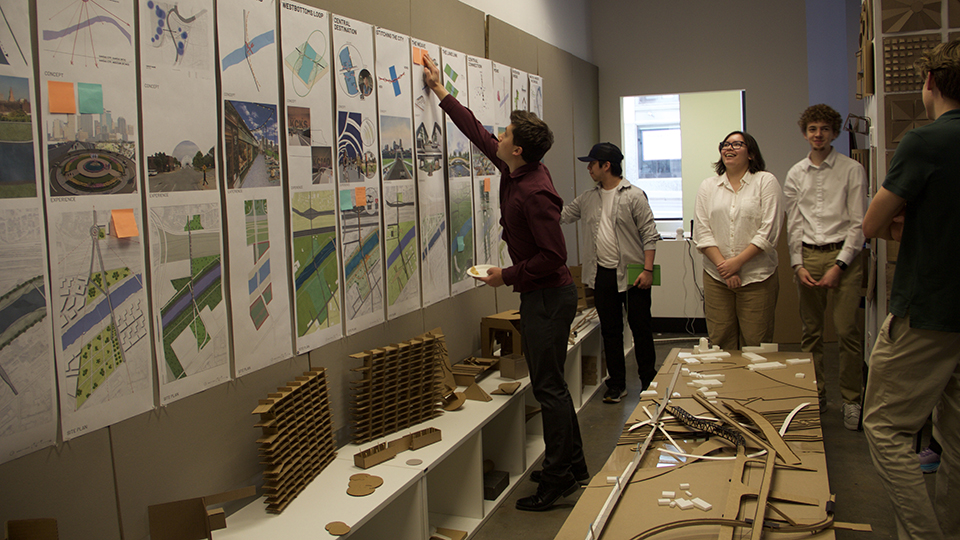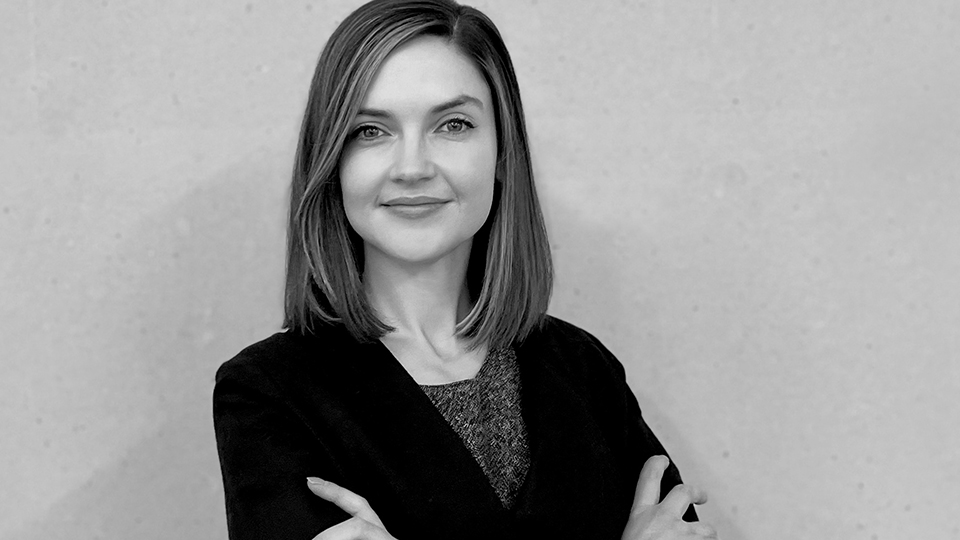Lauren Harness ’15 provides real-world experience for K-State architecture students
Growing up in her hometown of Garden City, Kansas, Lauren Harness ’15 remembers watching
her dad’s involvement with historic preservation. Those early experiences sparked
within her a fascination for the way that the built environment impacts communities,
and she knew she’d found her calling — and that her calling was leading her to K-State.
“It's hard to remember even when I started wanting to be an architect; it's kind of
always been the path, and everyone always would note, ‘K-State has a great architecture
program.’ I feel like that was inherent to the conversation as I was voicing that's
what I wanted my career to be when I was a kid.”
Last summer, Harness (pictured below) returned to her roots at K-State when she was
named the new director of the Kansas City Design Center. Located in the heart of downtown Kansas City, the Design Center is a service-learning
urban design program operating as a nonprofit partnership among local civic leaders,
professional designers, and K-State's College of Architecture, Planning and Design.
“My younger self did a great job picking my career,” Harness says with a chuckle. “The reason I like architecture is because of its ability to shape our social networks. I've mainly worked on civic projects and educational projects, so the fact that this role involves even more community outreach is a big bonus to me. I think that after every meeting we have, either community outreach or we created an exhibit this spring, after I leave my cup is just full. I'm like, ‘Oh, this is what it's all about.’”
A purple foundation
Harness said that as an aspiring architect, K-State quickly emerged as her top school
of choice.
“I actually didn't know a lot of people who went to K-State, and I would say it was
word of mouth with reputation. When I said what I wanted to be, people were like,
‘K-State, that's the program.’ And then I toured, and I felt at home right away. I
visited a few other schools, but things kind of all aligned on K-State, thankfully.”
She said she appreciated the “small liberal arts school” feel within the College of
Architecture, Planning and Design, while also getting to experience the excitement
of attending a large university.
“I felt like I got the best of both worlds, where I felt like I knew everyone in my
college, and then I still got to have the advantages of big football games, a big
campus atmosphere,” she said.
K-State taught her the power of building a support network, and the importance of
time management — a must in an intensive academic program like APDesign.
“I figured out ways to learn when I needed to prioritize what, in order to meet deadlines,
in order to still have some of the other campus involvement that I was hoping to have,”
she said.
Building the future
Harness said she has enjoyed her first year as director at the Kansas City Design
Center, which gives students the opportunity to move to Kansas City and fully immerse
themselves in a real urban design project. The center has been operating in its current
capacity for nearly two decades.
“There's real clients, and there's real stakeholders, and we have a focus on community
engagement,” Harness said. “So the students take what they've learned in Manhattan
in the first three years, and they have to present a lot and have community meetings.
It's sort of like a stepping stone from the academic environment to a professional
environment. Even our space in downtown Kansas City feels like halfway between an
office and an architecture studio on campus. It feels like a little incubator place
for them. Also, they work in groups, which is similar to how they'll work after school.”
Aside from gaining real-world career experience, students at the Kansas City Design
Center also help build a better future for the surrounding community.
“It's definitely an interesting time, and it's different even than when I graduated
10 years ago, partially because the students are entering a workforce with a major
housing accessibility crisis to react to and try to help resolve,” Harness said. “Many
of the issues that we are facing in the built environment will involve a lot of different
disciplines, so students need interdisciplinary experience in school to prepare. KCDC
is also a good preview for that type of problem solving.”
This fall, the students will be working on a project involving resilience hubs.
“There are nationwide efforts to better equip cities by creating centers that create
social and ecological resilience for cities,” she said. “So basically, community centers
that simultaneously allow neighborhoods to be ready for climate emergencies. It's
trying to be upstream by bringing people together and creating social resilience,
by allowing people to get to know their neighbors, but then also be ready if anything
happens. People could all gather there, so it has data backup and a storm shelter
as well.”
Overall, she’s proud of how the center aligns with K-State’s long-term land-grant
goals, and also the recent Next-Gen Strategic Plan’s focus on applied learning experiences
for every undergraduate student.
“Stepping into this role has been a very rewarding experience so far. K-State has
been such an important launching pad for me, and it served me so well,” she said.
“I feel very grateful to be returning to K-State and being able to pay it forward,
essentially.”



